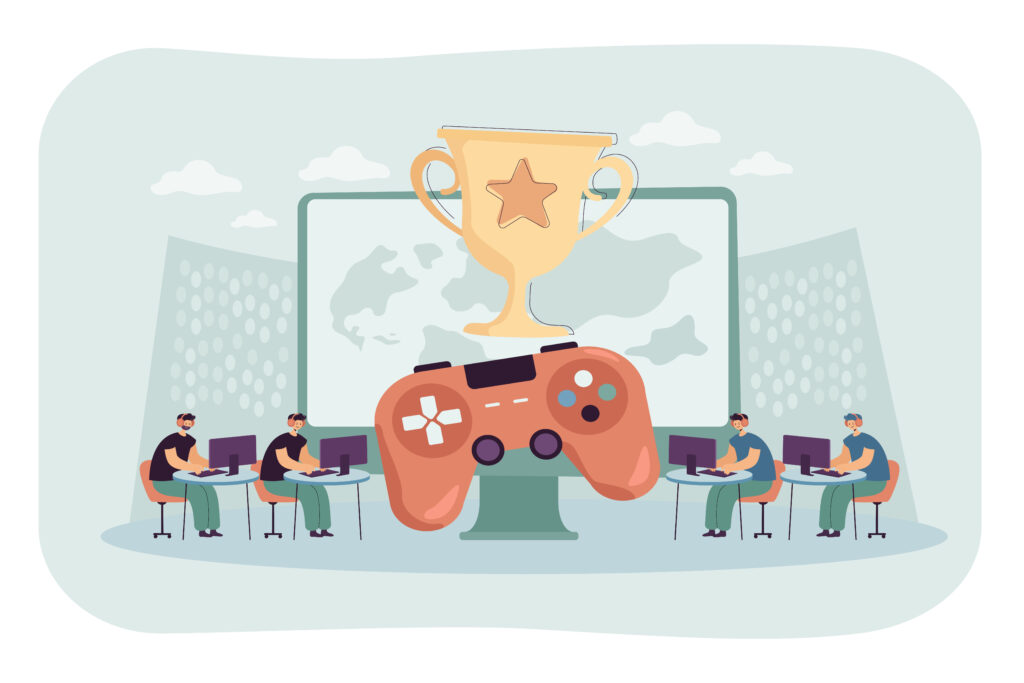Gaming addiction, also known as Internet Gaming Disorder (IGD), is a serious behavioral condition where excessive gaming interferes with daily life. Unlike casual gaming, which can be a fun and harmless hobby, addiction leads to negative consequences in mental health, relationships, and physical well-being.

Many people enjoy video games without issue, but for some, gaming becomes an uncontrollable habit. The World Health Organization (WHO) officially recognized gaming disorder in 2018, defining it as a pattern of persistent gaming that takes priority over other life activities, despite negative outcomes.
This guide will help you:
- Identify the warning signs of gaming addiction in yourself or others.
- Understand the root causes—why some people develop this addiction while others don’t.
- Learn the health risks, including mental, physical, and social consequences.
- Discover effective treatment options, from self-help strategies to professional therapy.
- Find support resources for long-term recovery.
Whether you’re a concerned parent, a friend, or someone struggling with compulsive gaming, this guide provides actionable steps to regain control.
What Is Gaming Addiction?
Gaming addiction is a behavioral disorder where a person becomes so engrossed in video games that they neglect real-world responsibilities. It shares similarities with gambling addiction, as both trigger compulsive behavior and dopamine-driven reward systems in the brain.
How Gaming Addiction Differs from Casual Gaming
Not everyone who plays video games is at risk of addiction. The key difference lies in control, consequences, and compulsion:
- Casual Gamers
- Play for entertainment and relaxation.
- Can stop easily when needed.
- Maintain a balance between gaming and other life activities.
- Addicted Gamers
- Feel an uncontrollable urge to play.
- Continue gaming despite negative effects (failed relationships, poor grades, job loss).
- Experience withdrawal symptoms (irritability, anxiety) when not playing.
Official Recognition of Gaming Disorder
In 2018, the WHO included “Gaming Disorder” in the International Classification of Diseases (ICD-11). The diagnosis requires:
- Impaired control over gaming (frequency, duration, intensity).
- Increasing priority given to gaming over other interests.
- Continuation or escalation despite negative consequences.
- Symptoms lasting at least 12 months (unless severe).
The American Psychiatric Association (APA) also acknowledges “Internet Gaming Disorder” in the DSM-5 (Diagnostic and Statistical Manual of Mental Disorders) but lists it as a condition requiring further research.
Signs and Symptoms of Gaming Addiction
Recognizing gaming addiction early can prevent severe consequences. The symptoms manifest in behavioral, emotional, and physical ways.
Behavioral Signs
- Neglecting Responsibilities
- Skipping school, work, or household duties to play games.
- Declining performance in academics or career due to excessive gaming.
- Losing Track of Time
- Intending to play for “just 30 minutes” but ending up gaming for hours.
- Frequently staying up all night gaming.
- Social Withdrawal
- Avoiding friends and family to spend more time gaming.
- Preferring online friendships over real-life interactions.
- Lying About Gaming Habits
- Hiding playtime from loved ones.
- Downplaying the amount of time spent gaming.
- Loss of Interest in Other Activities
- Abandoning hobbies, sports, or social events that were once enjoyable.
Emotional and Psychological Signs
- Mood Swings Related to Gaming
- Irritability, anger, or frustration when interrupted.
- Extreme excitement or euphoria while playing.
- Using Gaming as an Escape
- Playing to avoid stress, anxiety, or depression.
- Feeling emotionally numb outside of gaming.
- Withdrawal Symptoms
- Restlessness, anxiety, or sadness when unable to play.
- Obsessive thoughts about games when not playing.
Physical Symptoms
- Repetitive Strain Injuries
- Carpal tunnel syndrome (wrist pain from excessive mouse/keyboard use).
- “Gamer’s thumb” (tendon inflammation from controller use).
- Sleep Deprivation
- Disrupted sleep patterns due to late-night gaming.
- Insomnia caused by overstimulation before bed.
- Poor Hygiene and Nutrition
- Skipping meals or eating junk food while gaming.
- Neglecting showers, dental care, or general cleanliness.
- Eye Strain and Headaches
- Dry eyes, blurred vision, and migraines from prolonged screen exposure.
Causes and Risk Factors of Gaming Addiction
Understanding why gaming addiction develops helps in prevention and treatment. Multiple factors contribute, including psychological, social, and game design elements.
Psychological Factors
- Underlying Mental Health Conditions
- Depression, anxiety, or ADHD may lead to escapism through gaming.
- Low self-esteem drives individuals to seek validation in virtual achievements.
- Personality Traits
- Impulsivity and sensation-seeking behavior increase addiction risk.
- Perfectionists may obsess over in-game rankings or achievements.
Social and Environmental Factors
- Lack of Offline Social Connections
- Lonely individuals may rely on online gaming for social interaction.
- Parental Influence
- Children with unrestricted access to games are at higher risk.
- Parents who use games as a “digital babysitter” enable excessive play.
- Peer Pressure
- Multiplayer games create social obligations to keep playing with friends or teams.
Game Design Elements That Encourage Addiction
- Variable Reward Systems
- Loot boxes, random drops, and level-ups trigger dopamine release.
- Endless Progression
- Games like MMORPGs (World of Warcraft, Genshin Impact) have no real endpoint.
- Social Competition
- Leaderboards, rankings, and esports create pressure to keep improving.
- Fear of Missing Out (FOMO)
- Limited-time events or rewards force players to log in daily.
Health Risks of Gaming Addiction
Long-term gaming addiction has severe consequences for mental, physical, and social well-being.
Mental Health Effects
- Increased Anxiety and Depression
- Social isolation worsens existing mood disorders.
- Poor Academic or Work Performance
- Neglecting responsibilities leads to failure in school or career.
Physical Health Effects
- Obesity and Muscle Atrophy
- Sedentary behavior reduces physical activity.
- Chronic Pain and Posture Issues
- Long hours in the same position cause back and neck pain.
Social Consequences
- Damaged Relationships
- Family and friends feel ignored or neglected.
- Financial Problems
- Overspending on in-game purchases or gaming equipment.
How to Seek Help for Gaming Addiction
Recovery is possible with the right approach.
Self-Help Strategies
- Set Strict Time Limits
- Use apps like Cold Turkey or StayFocusd to block gaming sites.
- Find Alternative Hobbies
- Replace gaming with sports, reading, or creative activities.
Professional Treatment Options
- Cognitive Behavioral Therapy (CBT)
- Helps change compulsive gaming habits.
- Support Groups
- Organizations like Game Quitters offer peer support.
Family and Friend Support
- Open Communication
- Discuss concerns without judgment.
- Encourage Offline Activities
- Plan outings to reduce screen time.
FAQs About Gaming Addiction
1. How many hours of gaming is considered addiction?
There’s no fixed number, but more than 2–3 hours daily with negative life impacts may signal addiction.
2. Can gaming addiction be cured?
Yes, through therapy, lifestyle changes, and support systems.
3. Are certain games more addictive?
Yes, competitive online games (e.g., Fortnite, League of Legends) have higher addiction rates.
4. How can parents prevent gaming addiction in kids?
Set screen limits, encourage outdoor play, and monitor game content.
Conclusion
Gaming addiction is treatable with awareness and action. If you or someone you know struggles, seek help early. Recovery is possible.
Would you like additional case studies, expert quotes, or expanded sections? I can refine this further based on your needs.

